“Normally, we are the best Honda service in all of Turkey.”
—Alaattin Balta
The bus was some huge fancy Mercedes and the comfort level was no less than in the Airbus A380 that flew me from San Francisco to Paris.



The personnel of the bus were extremely helpful in trying to make sure the motorcycle is fitted securely and arranging my actions after I arrive in Istanbul.
Some of the crowd, however, were not exactly the positive kind. A couple of guys on the back seats who were waiting for the same bus at the station were very obviously talking about me and making some jokes between each other.

One of them finally found the courage to speak.
“From?”
“Armenia”
(giggling) “Ermenistan?”
“Yeah”
“City? Erivan?”
“Yerevan”
“Yeh-reh-van! …What is?” he points at the Leatherman tool on my belt
“My Leatherman”
“Give!”
I handle him the Leatherman with a smile on my face. They play with it a little then give it back to me. How very typical.
“Photo!” they noticed the camera on my neck. They pose. I take a photograph. They make me show it to them. They don’t like the result. “Again!” — I take one again. “No, delete!” — I delete it.
“What is?” this time they point at my watch
“My watch” I shrug
“How much dollars?”
“Quite a few!”
“Give!”
“No way” I smile
“Gift to me?”
“Dude I am not giving you my Timex Expedition as a gift, sorry!” I know he doesn’t understand what I’m saying
“Change!” he points at his crappy $10 watch
“Sorry, I am not interested”
“Gift, gift!”
“No, sorry!” I smile wide again
I change my seat. They keep laughing about some things then get bored with me. Good.
After 18 hours of driving, 3 thirty-minute breaks and an annoyingly snoring man next to me, we arrive at Istanbul. The bus driver calls Honda, tells them where he “unloaded” me, tells me “wait here” and drives away. After about 40 minutes a white minivan with the Honda logo arrives. Two energetic young people ask me — “Motosiklet problem? Erzurum?” and as I nod they load my motorcycle into the van. I feel safe. It is a great feeling to know you can count on your brand!

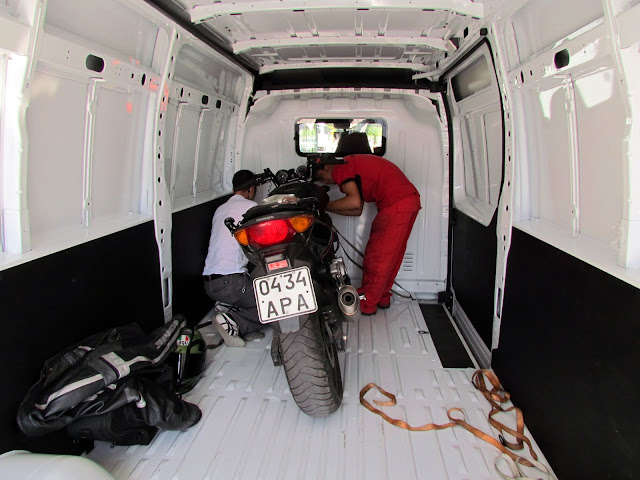
As we drive in the van, the guys ask me questions. The one in red looks more shy than the driver who is in white. So the driver asks.
“…From?”
“Ermenistan”
“Ooo!”
After a while of driving we arrive at an official Honda “servis”. It looks very impressive. A mid-aged man approaches me with a welcoming smile and pretty decent English.
“Where are you my friend! I was calling you, but your phone was off!”

Meet Alaattin, the owner of the most awesome Honda motorcycle dealer and repair service you can imagine. After 5 minutes my motorcycle is already on the stand, and an “usta” is working on it.
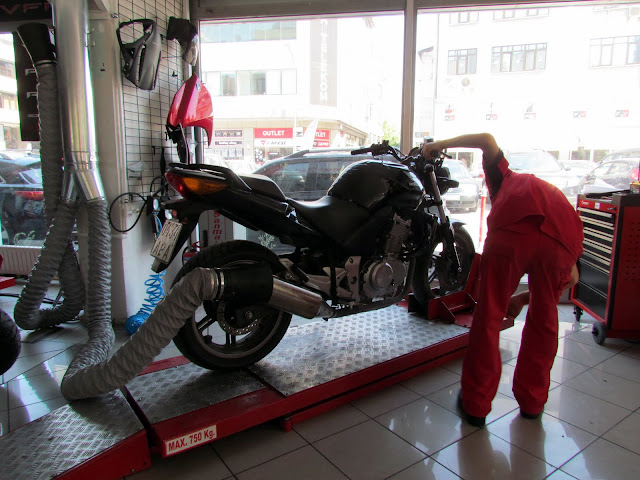


The guy with glasses on the last picture is Usta’s apprentice. His job involves looking closely to what Usta does, handling him some tools if he asks for something, pumping air into the tires if needed and unscrewing the bolts Usta asks him to. Screwing them back is handled by Usta.
The folks have every single tool for the job. How do you find out the RPMs of an engine if the tachometer is broken? This is how!

Alaattin has about 10 motorcycle stands and all of them are busy. Judging by the amount of the motorcycles being serviced and the amount of those parked outside waiting to be serviced, the business is good.
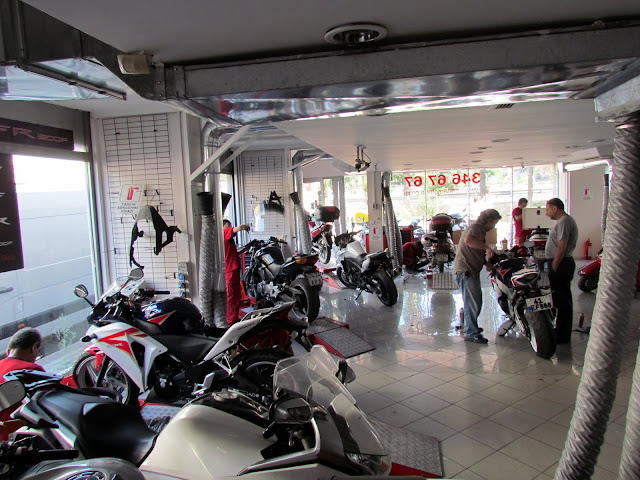
The guys are doing a spectacular job at extraordinary pace. Alaattin talks to each customer personally.
“Have you eaten anything?” he asks
“Not lately I have not!”
He calls some guy who runs his affairs. After 15 minutes two kebabs and a can of coke are waiting for me at the personnel’s room.
Alaattin is aware of every little detail about his business. Oh and he loves to use the words “fuck” and “normally”. People say he is a “dinosaur” in motorcycle business in Istanbul. He’s been around since the 80ies of the past century. After repairing my bike Alaattin personally gives it a test ride to ensure everything is fine.
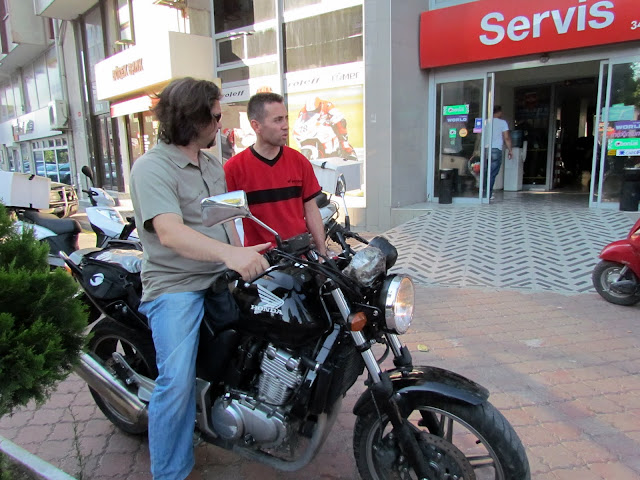
“It runs very good now!”
“Thanks, you guys got really awesome service here!”
“Thank you! Normally, we are the best Honda service in Turkey!”
“You look like you would be!”
“You need to change the tires as well, they won’t be good after less than a thousand kilometers!”
He is right. My tires are worn out. The worst part is, there are no motorcycle tires in Armenia.
“OK, how much would that cost me?”
“About 300 dollars for both!”
“What about the service cost?”
“It depends on whether or not you are taking the tires!”
“I will take the tires”
“Then the service will cost you $250!”
“Do you think you could drop that a little for me?” (long live Uğur!)
“What is your suggested price?”
“I don’t know… $200?”
“Deal!” — he dials Michelin and places an order for my tires. “The tires will be here tomorrow! You can leave your motorcycle in the store, and take it tomorrow after we change them — it is safe here! Do you have a hotel you will stay in?”
“Not yet!”
“Normally, I would offer you to stay in my home. But I have a 1 year old baby girl and she cries in the nights, so unfortunately I cannot do it now.”
He calls one of his employees.
“I will tell him to ride you on his bike to Deniz Hotel. We have a deal with them and they give our customers lower prices!”
“Perfect!”
The guy who rides me looks like a very typical Armenian kebab type of a person wearing an earring — an exceptional combination! I try to take some pictures as he rides me through Istanbul’s chaotic traffic.

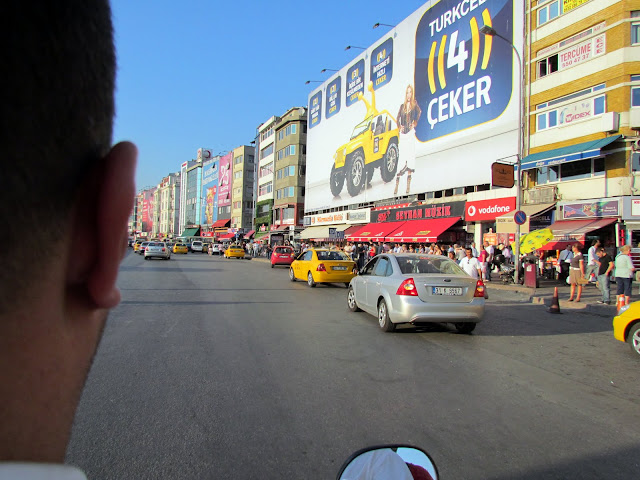
Boy oh boy, my motorcycle is fixed, I got new tires, I only spent $550, and Istanbul looks amazing!!!!





